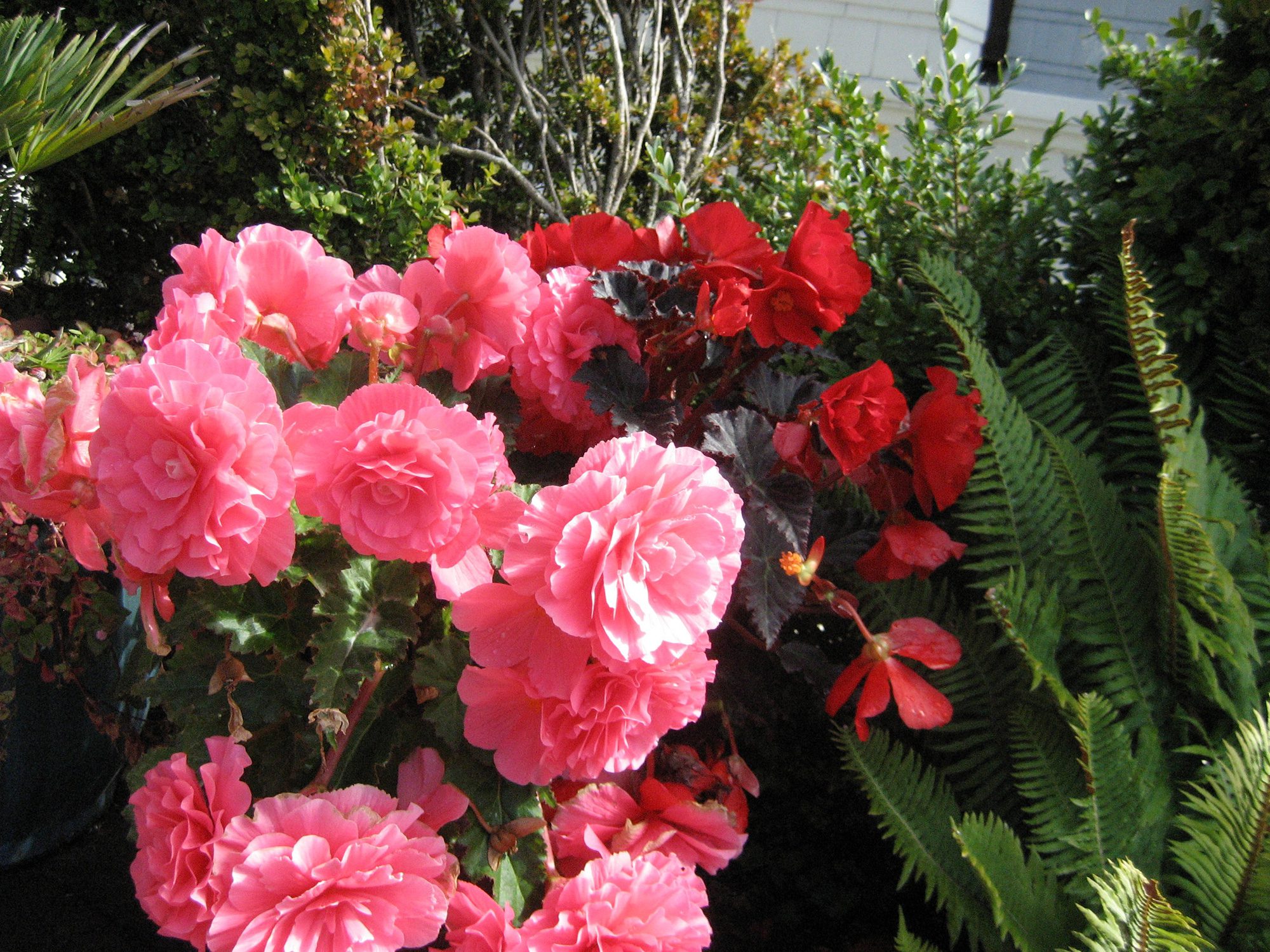Tuberous begonias are probably the most well-known begonias here in the west. They range from saucer-sized blooms on stout, upright stems to multi-stemmed, hanging basket types, covered with golf ball-sized flowers. What they all have in common are bulb-like, tuberous rootstocks, which are commonly sold in late winter or spring. Nearly all bloom summer to fall.
Light
Choose a bright shady spot for your plants – anywhere from a shaded corner on a sunny, covered porch to a flowerbed that gets cool, morning sun and afternoon shade. The filtered shade of trees or lath is ideal.
Planting
Tuberous begonias love well-drained, hummus-rich soils. If you plant in the open ground and your soil is heavy clay, add plenty of compost or other organic matter such as “Goldrush”. Improve drainage by mounding or otherwise raising the area. In pots use a friable, porous medium like a premium potting soil or planting mix. Saturated soil with little air space will encourage pathogens. Plant tubers concave side up, either just exposed or under no more than an inch of soil. (Angle tuber to the side to prevent rotting if it has a deep cup and seems likely to hold much water.) Better root systems develop with plenty of space so use at least an eight inch diameter pot for a single 2-inch tuber or repot from a six inch pot later in the season.
Water
Begonias prefer moist but not wet conditions. Allow the tuber to dry a bit between waterings until growth begins in, usually, one to three weeks. You may then need to water as much as every day or two depending on the temperature and humidity. Reduce watering in fall as leaves begin to yellow.
Fertilizer
The response begonias have to regular feeding can be astounding. As yours grows apace, begin adding a water soluble fertilizer once a week. The plants and flowers will both be larger and the bloom season is often extended. This is especially important for potted plants.
Suggestions
Try increasing flower size by removing the female flowers (the single flowers with a tri-winged pod just below).
In drier weather, try overhead watering in the early mornings to curtail powdery mildew.



